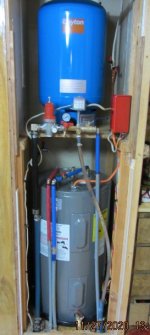Usually water in the pan is a leaking T&P valve, easily replaced. Far as flushing goes, that depends on the amount of minerals in your water (if it's well water). I flush mine monthly because we have a lot of calcium in the water, yours may be different. My personal view is plumbers caution against flushing a HWH because they are looking at premature replacement. I'd ignore that entirely.
Even with our well water and mineral content, our HWH will last a minimum of 10 years, but then again, it gets flushed monthly.
My opinion, take it or leave it, your choice entirely.




 -Sort of like: Say “toast” ten times fast. Now answer: What do you put in a toaster?
-Sort of like: Say “toast” ten times fast. Now answer: What do you put in a toaster?